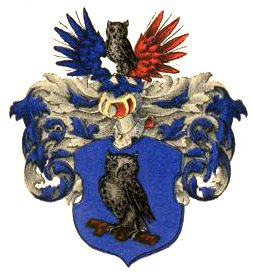
The Governor, Maaherra, or Landshövding, of a province of Finland headed the activities of the State Provincial Office, Lääninhallitus, or Länsstyrelse until the end of 2009, when the provinces were abolished. The governors were appointed by the President. Many former ministers including but not limited to Kaarlo Hillilä, Martti Miettunen, Hannele Pokka and Anneli Taina served as governors, since the post was regarded as prestigious enough for a retiring minister, but still politically neutral. The title of maaherra was also considered a personal title, such that once appointed, the title maaherra remained for life.
The Province of Vaasa was a province of Finland, established in 1775 when Finland was an integrated part of Sweden from the southern part of Ostrobothnia County and disbanded in 1996. The province was named after the city of Vaasa.
Turku and Pori Province was a province of independent Finland from 1917 to 1997. The province was however founded as a county in 1634 when today's Finland was an integrated part of Sweden. It is named after the cities of Turku and Pori.
Nyland and Tavastehus County was a county of the Swedish Empire in Finland from 1634 to 1809.
Lantmarskalk, was the title of one of the speakers of the Swedish Riksdag of the Estates, from 1627 to 1866 and of the Diet of Grand Duchy of Finland from 1809 to 1906. The Lantmarskalk was appointed by the Estate of the Nobles and also served as its speaker (talman). The Lantmarskalk should not be confused with the Riksmarsk or the Riksmarskalk, which were Great Officers of the Realm and royal appointees.

The Dalarna Regiment, designations I 13 and I 13/Fo 53, was a Swedish Army infantry regiment that traced its origins back to the 16th century. The regiment's soldiers were originally recruited from the province of Dalarna, where it was later garrisoned. The unit was disbanded as a result of the disarmament policies set forward in the Defence Act of 2000.

The Västmanland Regiment, designations I 18 and Fo 48, was a Swedish Army infantry regiment that traced its origins back to the 16th century. It was disbanded for the first time in 1927 but later reraised and disbanded again in 1997. The regiment's soldiers were originally recruited from the province of Västmanland, and it was later garrisoned there.

Carl Johan Adlercreutz was a Swedish (Finnish) general and statesman, born in Borgå, Finland on family estates. Entering the Swedish army aged 13 in the Finnish Light Cavalry Brigade, he was present when Gustav III launched his coup-d’etat. He studied military theory in Stockholm.
Adlercreutz is a Finnish, Swedish and Danish noble family. Its oldest known ancestor is Swedish speaking Finn, Erik Markusson, dead 1654, who was a farmer in Biskops, Iso-Teutari, Lohja, Uusimaa, Finland ]. His son Tomas Eriksson Teuterström 1643–1710) served king Charles XI and Charles XII in the Treasury and was knighted on 26 September 1700 in Karlshamnby King Charles XII of Sweden with the name Adlercreutz, and was introduced at Swedish House of Nobility, Riddarhuset in 1703 with the number 1382, which has later been changed to 1386 B.

Admiral is a naval rank in Sweden. According to current practice only royals and the Supreme Commander of the Swedish Armed Forces, if he were to come from the Swedish Navy, can hold the rank of a full, four star, Admiral (amiral) in Sweden. The lower admiral's ranks currently existing are: Vice admiral, Rear admiral and Rear admiral /Flotilla admiral. The rank of Rear admiral /Flotilla Admiral was added on 1 July 2000, and simultaneously promotions to the rank Kommendör av 1. graden were discontinued. One to three star admirals are all addressed as "admiral" in daily speech.

Count Carl Löwenhielm was a Swedish military officer, diplomat, and politician.

The Minister for Defence of Sweden is a member of the Government of Sweden. The Minister heads the Ministry for Defence and is appointed and dismissed at the sole discretion of the Prime Minister of Sweden.

Essen or von Essen is the surname of a Baltic German and Swedish noble family.
The baronial family Adlercreutz is a branch of the commander family Adlercreutz. The major general, later the general of the cavalry and one of the lords of the realm, count Carl Johan Adlercreutz (1757-1815), was created a Swedish baron together with his three sons Fredrik Thomas Adlercreutz (1793-1852), Carl Gustaf Adlercreutz (1799-1883 and Johan Henrik Adlercreutz, and the title should follow the oldest son, son after son in accordance with primogeniture, 30 August 1808 in high quarter Grelsby on Åland by King Gustav IV Adolf of Sweden, although the patent of nobility was issued first 27 February 1810 at Stockholm Palace by King Charles XIII. They were introduced at the Swedish house of lords 15 March 1810 as baronial family number 331. The two younger sons ended their lines themselves 9 April 1883 and 18 October 1841.
Ostrobothnia County was a county of the Swedish Empire from 1634 to 1775.

Wachtmeister is a Swedish noble family from Livonia, who immigrated to Sweden in the 16th century. The name Wachtmeister is German for 'sergeant'.